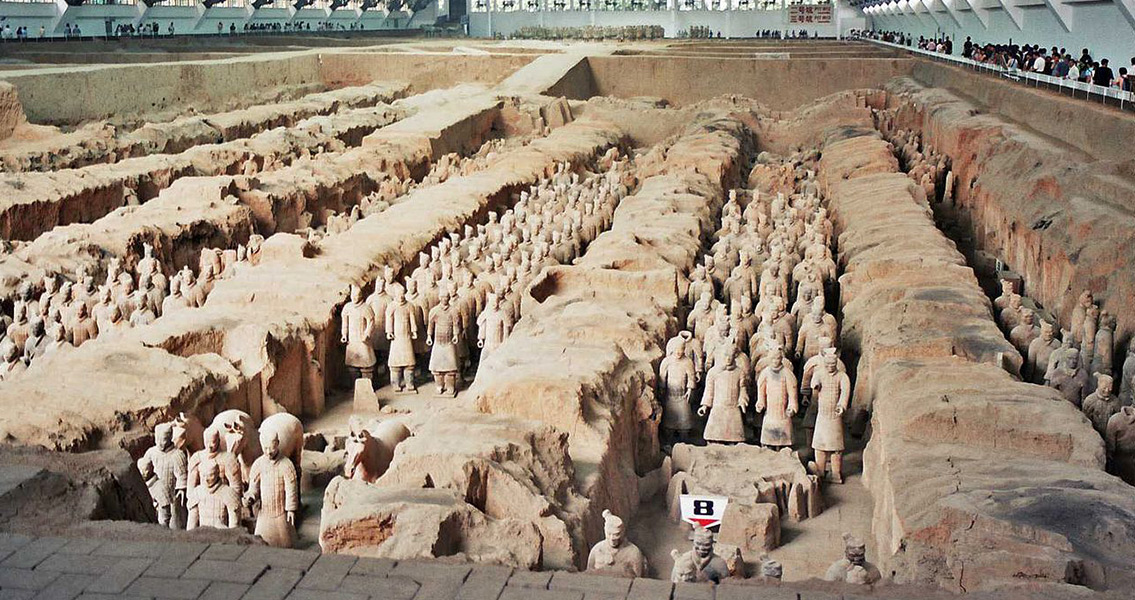<![CDATA[A remarkably well preserved crossbow dating back 2,200 years has been unearthed during a dig at the site of the famed Terracotta Army. This is the first such artefact that has been discovered whole - until now archaeologists had only come across pieces of the weapons. Given the size and shooting range of the crossbow, it is possible that it is an example of the type of weapon that determined the success of Emperor Qin Shi Huang, the founder of the first empire in China, for whom the Terracotta Army was made. The crossbow that researchers led by Shen Maosheng found had a bowstring of 1.30 m and an arch of 1.45 m, an impressive size that suggests the weapon was capable of shooting bolts to a distance of up to 800 metres. This is double the range of an AK47 machine gun, according to the former curator of the Museum of Qin Terracotta, Yuan Zhongyi. In-depth examination of the find will allow the researchers to create a replica of the crossbow and establish its actual shooting range through tests. What has been gleaned so far is that, because of its smooth surface, the bow string was most likely made from animal tendon rather than fabric, and that the trigger mechanism is bronze. The significance of the find is reinforced by the fact that it could shed light on an ancient device whose function has so far remained a mystery: 'the Quing'. Quing are mentioned in ancient documents, but only now have the researchers seen one for themselves; as part of the recently discovered crossbow. The device consists of two wooden sticks, each of which contains three holes standing at equal distances from each other. According to Shen, this suggests that the Quing was used for transporting crossbows, by putting ropes through the holes and fastening the weapon. This, Shen added, had helped keep the weapon in good working condition when it was being transported, by protecting its arch and string. The importance of bows and crossbows in the rise of the Qin Empire is well documented, having been noted in many ancient scrolls. Yet the extent of their importance is only surfacing now. Given the range of the crossbows, they could have caused extensive destruction to opposing armies, and from a comfortable distance. The Qin dynasty, which ruled between 221 and 207 BCE, originated in Qin Shi Huang’s conquest of the six neighbouring states of Qin, effectively giving him control over the whole territory of what is now China. This was the first centralised state in the region, combining a highly structured political system, which focused all power in the hands of the emperor, with a stable economy and a regular - and large - army. Emperor Qin introduced standard weights and measures, valid throughout his realm, and a unified currency: a coin with a square hole in it. At the same time, the emperor was a true tyrant, stifling the voices of his enemies quickly and violently, on one occasion by burying alive hundreds of dissenters. Perhaps the most well known legacy of the dynasty, however, besides the start of the Great Wall of China, is the Terracotta Army, a huge collection of life-sized warrior and horse statues that is considered to be one of the greatest archaeological finds of the twentieth century. ]]>
Crossbow May Hold Key to Qin Dynasty’s Military Success
